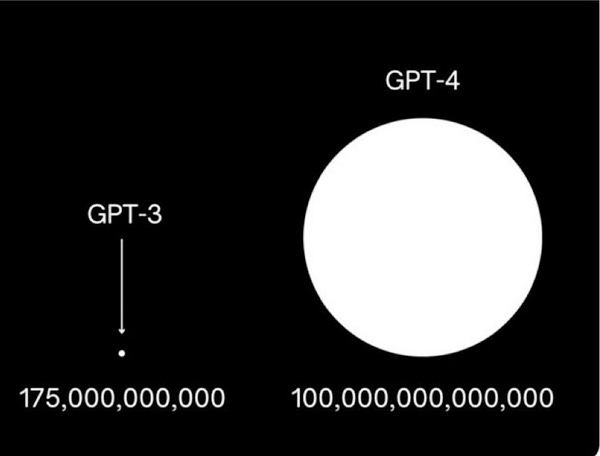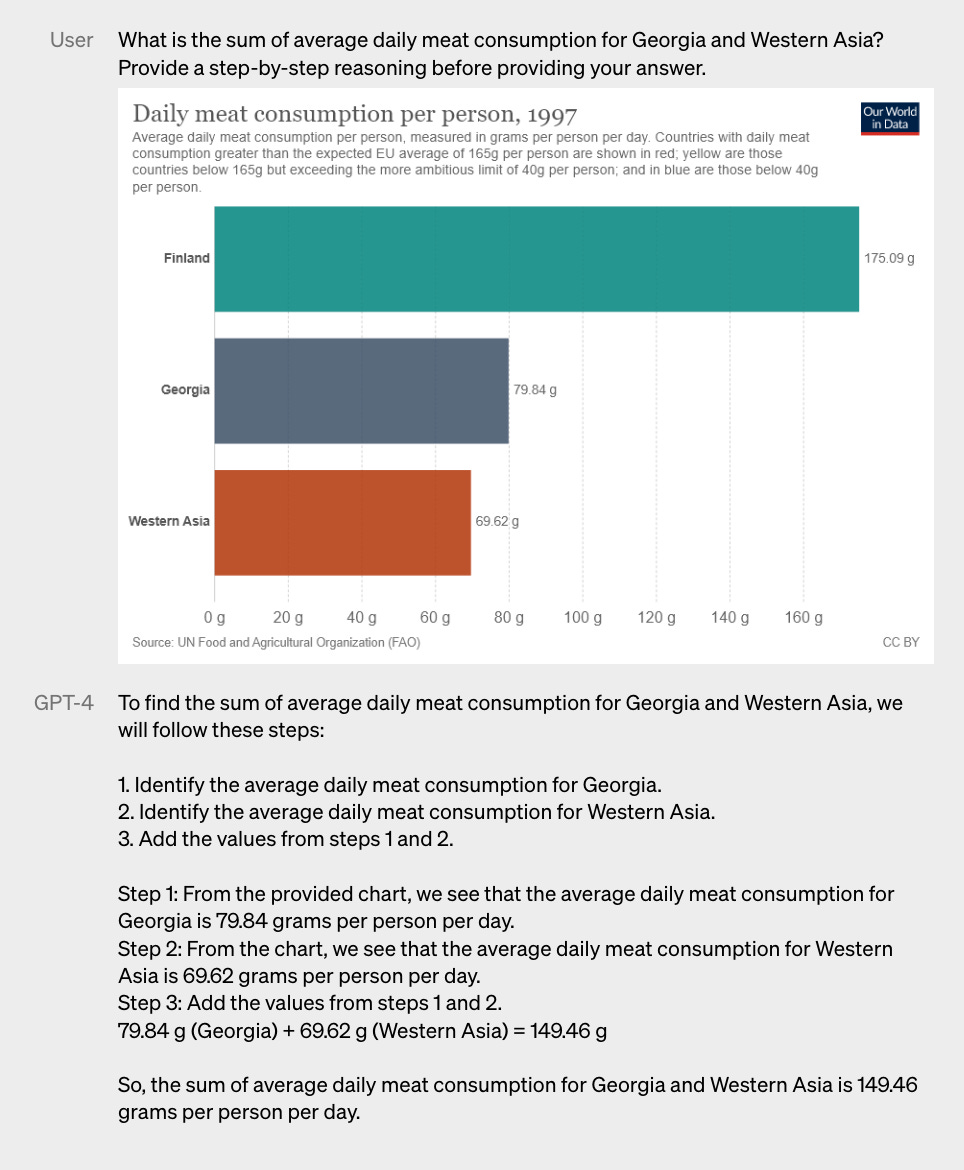[62] The AI Renaissance
GM Readers!
Today let’s explore how AI innovations like GPT4 are ushering in a new Renaissance. Specifically, let’s look at what AI enables at the user level and how quickly AI is developing and evolving.
Hope you enjoy!
Building Blocks:
🎨 Life in Color Relevant Essays: [AI Rewires Our Work Model] + [Web3 Renaissance]
Shameless Ask:
🙏 Please share Life in Color with a friend and ask them to subscribe 😄
AI is seeding a new renaissance.
Innovations like ChatGPT / generative AI change the human experience by changing how we create and express ourselves.
We are entering the AI Renaissance.
🚀🤖
GPT4: Order of Magnitude Change
Open AI recently released Chat-GPT4, which is based on orders of magnitude more data points than Chat GPT3.
In the announcement blog, OpenAI highlighted some impressive things GPT4 can do.
GPT4 is now in the 80+ percentile of test takers for common high school, college and graduate school exams. It can past exams that most of us agonize over with flying colors. At least from a standardized exam perspective, GPT4 is more than good enough to apply to the world’s top universities.

GPT4 can also ingest visual inputs. A user can give GPT4 an image like a chart and ask it a question. And GPT4 will respond with insights about the chart.
All the above is impressive but still within the realm of reason / expectation — a data based model solving math and science problems, with some exams requiring essay writing.
What’s more impressive is how GPT4 can understand context and situation.
In the image below, GPT4 was able to explain why this image was unusual.
To do this, GPT4 needed to know that it’s not a normal for a person to be ironing their clothes while hanging from the back of a taxi.
While for humans this is a fairly obvious thing, we might take for the granted the amount of information that is required to help us arrive at this conclusion: context around taxis, roads, society, norms, what is consider normal versus not, why we normally iron inside versus on a taxi, etc etc.
All of this happens at the subconscious level in a split second.
To reason and understand at this level, GPT4 and AI (in general) has to reason increasingly with subjectivity in mind.
Seeing the image above, most of will agree with it being unusual. But what if the image wasn’t so obviously “unusual,” where some people think the image is normal and others think it’s unusual.
We swim in subjectivity and the messy middle in our day to day lives — i.e. most of the human experience is not so black and white.
It will be interesting to see how AI navigates subjective situations, especially ones where there aren’t clear cut answers.
The AI Renaissance
A while back I wrote about the Web3 Renaissance. Renaissance describes a time period where every sector is innovating. The original Renaissance saw innovations across science, art, commerce, etc. In the Web3 Renaissance, the innovation across sectors is being driven by composability, in both code and culture.
A breakthrough change of some sort catalyzes a Renaissance era. A breakthrough change can be in technology or science, but it could also be in ideas and philosophies.
The change can be in any area of life and society, but it has to meet the bar for “breakthrough” — it has the potential to impact most, if not all sectors.
It has to fundamentally change the human experience.
AI fits this description:
It has the potential to impact every single industry and sector.
It changes the way our modern systems work.
It supercharges our ability to create.
While the first two points are still in the early stages of playing out, the last point is already happening.
With AI, we now have a super smart assistant that can super charge how we create.
If you want high fidelity 3D art, you are a few keystrokes away.
If you want to write code for a website that has specific x,y,z features, you are a few keystrokes away.
If you want to “explain the plot of Cinderella in one sentence, but each word had to begin with the next letter in the alphabet from A to Z, without repeating any letters,” you are a few key strokes away.
The Internet made us super consumers.
AI makes us super creators.
Last time, I highlighted how in this new world of AI, knowing what to create is more important than the actual creating.
The extreme of this is that we all become prompt engineers. We simply imagine what we want to create but we don’t actually have to do any of the “creating” in the conventional sense.
This means what we can create is only limited by our imagination.
This point alone is worth pondering because this is fundamentally different than the human experience today.
Like any emerging technology, the path to adoption will be filled with growing pains. We’ve spent most of our digital lives as consumers and all of a sudden we can now be creators (en masse).
To go from consumer to creator is not an easy change, but we can’t put innovation back in a box.
Early But Happening Fast
While it’s still early, progress is happening fast.
ChatGPT reached 100M users in just 2-months after launch, making it the the fastest application to reach this milestone. (For comparison, Instagram took 2.5 years to reach 100M users).
And GPT4 is improving. Open AI announced GPT4 on March 14th and less than 10 days later it announced ChatGPT plugins. Here is a small snippet from the OpenAI blog post.
Though not a perfect analogy, plugins can be “eyes and ears” for language models, giving them access to information that is too recent, too personal, or too specific to be included in the training data. In response to a user’s explicit request, plugins can also enable language models to perform safe, constrained actions on their behalf, increasing the usefulness of the system overall.
One of the earlier critiques users called out was that GPT4 is based on outdated information up to a certain cut off date. With plugins, GPT4 can now integrate more recent information. And it will increasingly become personalized.
Each new lego block (feature, application, improvement, etc) that gets shipped opens up more ways for AI to impact our lives. The rate of change is increasing at an increasing rate.
But we are still barely scratching the surface.
Right now it feels like we are in the Skeuomorphic design phase of the technology. Skeuomorphic design references a design principle where the new thing looks like the old thing.
Some examples: (1) when Apple’s iBooks first came out, it looked like a digital version of a bookshelf, (2) the calculator app on your phone is made to look like an actual calculator.
With all emerging technologies, it takes a while before we figure out the new fundamental frameworks that the technology enables.
When the Internet first came out, all you can do was just read text and information. But the Internet then went out to transform all aspects of our lives and made us more digital native. E.g. the Internet made commerce digital, enabled a global workforce to collaborate digitally, etc etc.
With GPT4, we are using it to write essays, organize notes, write code, generate images — activities that are done by humans today that perhaps AI can do more efficiently.
This is magical… but it’s just the first step.
AI will bring about other yet to be seen fundamental changes.
And remember, AI is just one emerging technology amongst others (blockchain, etc).
The AI Renaissance isn’t taking place in a vacuum and it isn’t only Renaissance happening right now …
🤯 Renaissance ^ x 🤯
For the first time, it feels like endless imagination could mean endless potential.










